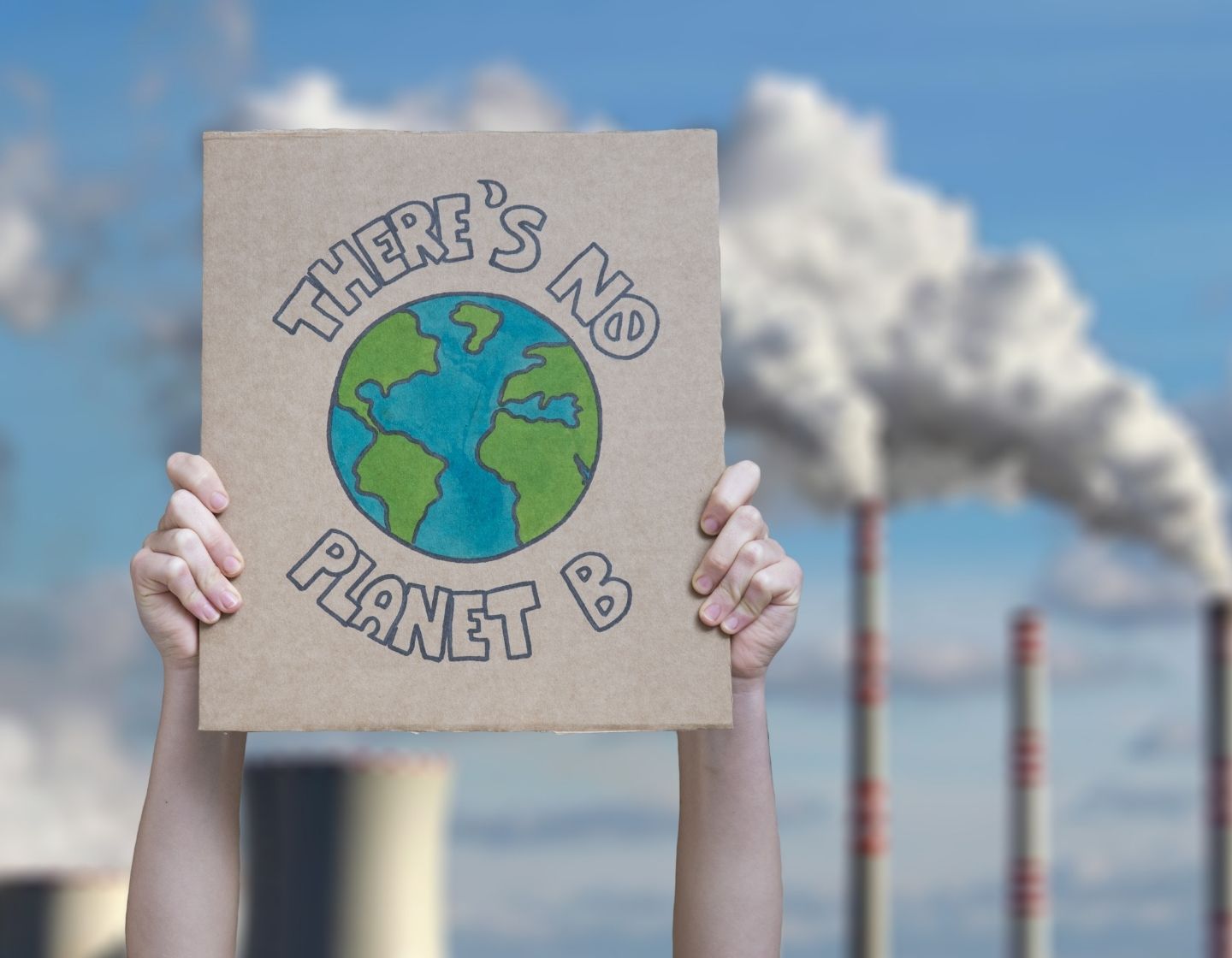What to expect from COP26 and after
What can we expect from the 2021 instalment of the United Nations annual climate change conference – COP26? And what comes after?
The Conference of the Parties (COP) are signatories to the UN Framework Convention on Climate Change agreed in 1994. There are 196 countries and the EU. What actions they take in Glasgow over the 12 days from November 1st will determine the course of life on the planet over the next 100 years.
The British government is host to these infernally complex negotiations, with inputs from officials drawn from every country and civil society, or non-state actors. The goal of COP26 is to stop the planet from frying and drowning over the next century but whether complete and effective agreement can be reached by all parties is uncertain.
The goals of COP26
1. Global net zero by 2050, keeping 1.5 degrees of warming within reach
Countries would need to set ambitious emissions reductions targets for 2030 to set a path to net zero greenhouse gas emissions by 2050.
The government advises that to deliver on these stretching targets, countries will need to:
- accelerate the phase-out of coal
- curtail deforestation
- speed up the switch to electric vehicles
- encourage investment in renewables.
2. Adapt to protect communities and natural habitats
There will be continued climate change as emissions are reduced, with severe consequences. All parties need to commit to protecting and restoring ecosystems as well as constructing defences and warning systems with resilient infrastructure and agriculture.
A recent CEO Briefing from the World Economic Forum emphasises the crucial role of nature-based solutions to climate change. It underlines that there is no pathway to 1.5°C without addressing nature loss and land degradation.
It says that a fifth of the world’s 2000 largest companies have committed to net-zero targets on emissions and now businesses must also make commitments on nature and advises: “To secure a healthy, resilient and equitable world, we need to fight climate change and biodiversity loss together.”
3. Mobilise finance
Developed countries need to honour their previous commitment under the United Nations Framework Convention on Climate (UNFCCC) to provide at least $100bn in climate finance per year by 2020 – they are way behind on this one, with $70bn provided in recent years. Oxfam reports that developed nations will offer up to £69bn annually by 2025.
This will be an emotive and problematic area for discussion in Glasgow, and could be the “incoming comet” that obliterates the meeting. It may be that the potential economic prizes being dangled might galvanise international financial institutions to unlock trillions in private and public sector finance in the coming decade and beyond.
In a bid to forge some sort of positive path on financing the US has just doubled its commitment to overseas climate aid to $11.4bn annually by 2024. President Joe Biden told the UN General Assembly (UNGA) that all nations should “bring their highest-possible ambitions to the table when we meet in Glasgow for COP26 and then to have to keep raising our collective ambition over time”.
The mantra of continually greater commitments and rising ambitions is a relatively new theme in the climate sphere. It’s no longer seen as enough to make binding but static pledges to reduce emissions – if COP26 delivers fully, then every country will be raising the bar year on year on greenhouse gas reductions and regeneration.
4. Collaboration
The final of the four goals will be the most challenging by far, given the economic fallout of COVID, the retreat from Europe and rising nationalist pressures. The negotiations on finalising the details needed to implement the Paris Agreement – the Paris Rulebook – depend on consensus and the UK government will need to strain every sinew to make sure all voices are clearly heard during discussions, and beyond.

Reminder on global warming
It’s worth rehearsing why these talks are so important. Inadequate action on global warming that leads to just 2 more degrees would mean that a third of the world’s population would face severe heat, leading to health problems and more heat-related deaths on a regular basis.
We would devastating effects on wildlife and communities with the loss of nearly all warm-water coral reefs destroyed while Arctic sea ice would melt completely at least one summer every 10 years. There might also be permanent loss of ice sheets in Greenland and the Antarctic, provoking a rise of several metres in sea levels over the next century.
Everyone is praying for a less catastrophic future with warming contained to 1.5°C, which would mean fewer species at risk of extinction, less risk of food and water shortages, and reduced impacts on economic growth and human health from air pollution, disease, malnutrition and exposure to extreme heat.
Costs of climate action
It’s no surprise, then, that the costs of achieving global net zero by 2050 are eye-watering. The New Energy Outlook report from BloombergNEF estimates that the range is $92trn trillion and $173trn over the next thirty years, depending on whether we go for Planet-saving Lite or the Happy Globe.
It says that annual investments in global decarbonisation need to more than double from $1.7trn currently to between $3.1trn and $5.8trn. Energy-related emissions need to fall 30% below 2019 levels by 2030, and 75% by 2040, to reach net zero in 2050.
Even this means working with a 1.75C warming scenario, requiring a 3.2% reduction annually to for the rest of this decade. The stark fact is that global emissions rose by almost 1% annually from 2015 to 2020.

Can we achieve 1.5C?
Even if COP26 is a resounding success and every single actor across the globe acts swiftly, the chances of achieving a lower rise in global warming are still lower than we’d want. The Climate Crisis Advisory Group of 15 world-leading climate scientists, including Sir David King, the UK’s former chief scientific advisor is downbeat.
Its report, cheerily titled ‘The Final Warning Bell’, builds on data from the Intergovernmental Panel on Climate Change’s (IPCC) Working Group 1 and calculates that, even if the world achieves net zero by 2050, there will only be a 50% chance that the global temperature increase will be capped at 1.5C.
This echoes the UN view that global greenhouse gas emissions must peak in the next four years, with completed closure of all coal and gas-fired power plants in the next decade and lifestyle and behavioural changes will be needed to avoid climate breakdown.
Double up on climate targets
The UN is now advising that all countries need to redouble planned climate targets to meet the base threshold of the Paris Agreement in its latest Synthesis Report into Nationally Determined Contributions (NDCs).
It warns that progress is slowing on emissions reductions and a review of all available NDCs from the 191 Parties, shows that an increase in emissions of around 16% will happen by 2030. The report was requested by all 191 Parties to the Paris Agreement, so there would be the most current assessment on intended climate action before COP26.
As of July 2021, the report accounts for 86 new or updated commitments from more than 110 Parties. The latest NDCs cover around 59% of the Parties and almost 50% of global greenhouse gas emissions. The report advises that these NDCs would contribute to a projected decrease in global emissions of 12% by 2030, compared to 2010 levels.
Starkly, the Intergovernmental Panel on Climate Change (IPCC) estimates that a 45% reduction would be required by the end of this decade to reach 1.5C, or 25% to reach 2C.
The UN says global efforts need to more than double just to meet the 2C threshold of the Paris Agreement.

Lack of climate progress
New research from Climate Action Tracker (CAT) warns that momentum on updating climate targets has stalled and currently only Gambia is set to deliver climate action in alignment with the 1.5C pathway of the Paris Agreement – and emissions are expected to be at the same level in 2030 as they are now.
The organisation’s new methodology observes trends including domestic target, policies and action, fair share, climate mitigation finance and land use and forestry. It advises that seven counties are “nearly sufficient”, including the UK. This means that they could reach the 1.5C threshold with moderate improvements.
The necessary data that updates targets on climate action to 2030 has also stalled since May, with no major emitter or economy putting forward new targets, the research indicates.
Is the UK ready for big climate action?
The Government survey and report in July, “Climate Change and Net Zero: Public Awareness and Perceptions” provided an illuminating snapshot into current beliefs around climate change in the UK.
- 83% of participants say that climate change is a concern.
- Energy efficiency measures are seen as the change most likely to occur with 66% of participants seeing this as “extremely likely” or “somewhat likely” to occur in the next few decades.
- 14% perceive climate change as affecting their local area by “a great deal” compared to 42% of UK participants perceiving climate change as affecting other countries.
- 86% perceive other countries to be experiencing climate change effect to “at least some extent”.
- Around half (54%) recognise their local area to be experiencing climate change effect to “at least some extent”.
- 49% believe that transport contributes a great deal to carbon emissions.
- Just 22% see agriculture as contributing a great deal
- 50% say that the UK should pursue an equal mix of technological and lifestyle changes to reduce UK carbon emissions.
It does look like the UK is ready for a bit a heavy climate action – but might be less enthusiastic when presented with the options. An intelligent, inclusive and agile government marketing campaign is urgently needed.

Lifestyle changes
The UN Intergovernmental Panel on Climate Change reports that lifestyle changes, particularly in rich countries and among the wealthy globally, are crucial to success in combating climate change. This includes action to avoid overheating or over-cooling homes, more walking and cycling, cutting air travel and using energy-consuming appliances less.
It also advises that our eating habits need to change. And says, “A shift to diets with a higher share of plant-based protein in regions with excess consumption of calories and animal-source food can lead to substantial reductions in emissions, while also providing health benefits … Plant-based diets can reduce emissions by up to 50% compared to the average emission intensive western diet.”
And in contrast to some current beliefs and concerns, the UN report advises that the inclusive provision of modern energy facilities to those who currently lack them would have a “negligible” effect on emissions.
The big deal with King Coal
There are some encouraging signs of change in attitude from the world’s biggest emitter, China. It has just announced that it is to end support for new coal-fired power plant capacity abroad. We may here more detail at COP26 about the move, but it is significant as the country is currently the world’s largest public financer for overseas coal projects.
Carbon Brief estimates that the change could mean the cancellation of more than 40GW of planned coal projects in 20 countries and some of this overseas spending would be redirected to clean energy projects.
In contrast, one of the biggest exporters of coal and gas – Australia – has refrained from a commitment to net zero by 2050 and has faced sustained criticism for slow climate progress while remaining heavily reliant on coal-fired power. It the most carbon polluting nation per capita in the world.
It remains economically wedded to mining and trading dirty fuels with a view that this will continue as long as there is demand from Asia. In July, the UN ranked it last out of 170 member nations for its response to climate change and says that it is not on track to reach its modest Paris Agreement targets of a 26-28% cut on 2005 levels by 2030.
The government appears less than enthusiastic about COP26 and it’s PM may be a “no show”. But it is expected to present its updated NDCs in Glasgow.

UK business not on track
Australia is not alone on the slow road to Happy Planet. According to a new study by Zurich UK and the University of the West of England just five of 17 sectors in the UK have managed to reduce emissions in the past year.
The ‘Journey to Net-Zero’ study looked at: manufacturing; construction; transport; mining; agriculture; wholesale and retail; finance; gas and electricity; health and social work; water and waste management; service provision; ICT; real estate; accommodation and food hospitality; arts, entertainment and recreation; defence and public administration and education.
Of these, only arts, entertainment and recreation; health and social work; education; gas and electricity and public administration and defence managed to cut carbon. It concludes that the decarbonisation efforts will not be deep or rapid enough for net-zero alignment.
It says that the 17 sectors need to mitigate 382 megatonnes of CO2e by 2035 to align with the UK’s Sixth Carbon Budget but are on course to deliver reductions of just 34% of this figure (131 megatonnes),
Pressure from big business
At the same time, big brands including BT, Tesco, Santander and Heathrow are among more than 80 of the UK’s leading businesses piling the pressure on the UK government to deliver a more coherent climate strategy ahead of COP26.
They have delivered a letter to the PM calling for the government to provide the “strong domestic leadership that can help deliver global progress on climate change”.
The Business Group Alliance for Net Zero (BGA) is coordinating the effort to highlight the urgent need for a coherent, integrated and Treasury-supported Net Zero Strategy before the start of the global summit.
It is urging the government to mesh economic and fiscal policy with decarbonisation strategy and so give businesses the confidence to invest ambitiously in carbon reduction projects at speed and scale.

The once-only climate dividend
COP26 provides the global stage for every actor in our climate drama – nations, civil society, youth, marginalised groups, business, media. What is acted out remains to be seen and heard but we can only buy a seat, watch and wonder, and applaud all the good things. And hope against hope that the right choices will be made for the benefit of all.
It has to be said that the choice to invest in a cooler planet is not by any means a decision to don the hair shirt and embrace a dismal future life. Far from it, the opportunities are vast and enticing, from a reskilled and agile green workforce underpinning business opportunities of the scale not seen since the Victorian era, to tough and compassionate new forms of community. November in Glasgow will make history, of that there is no doubt.